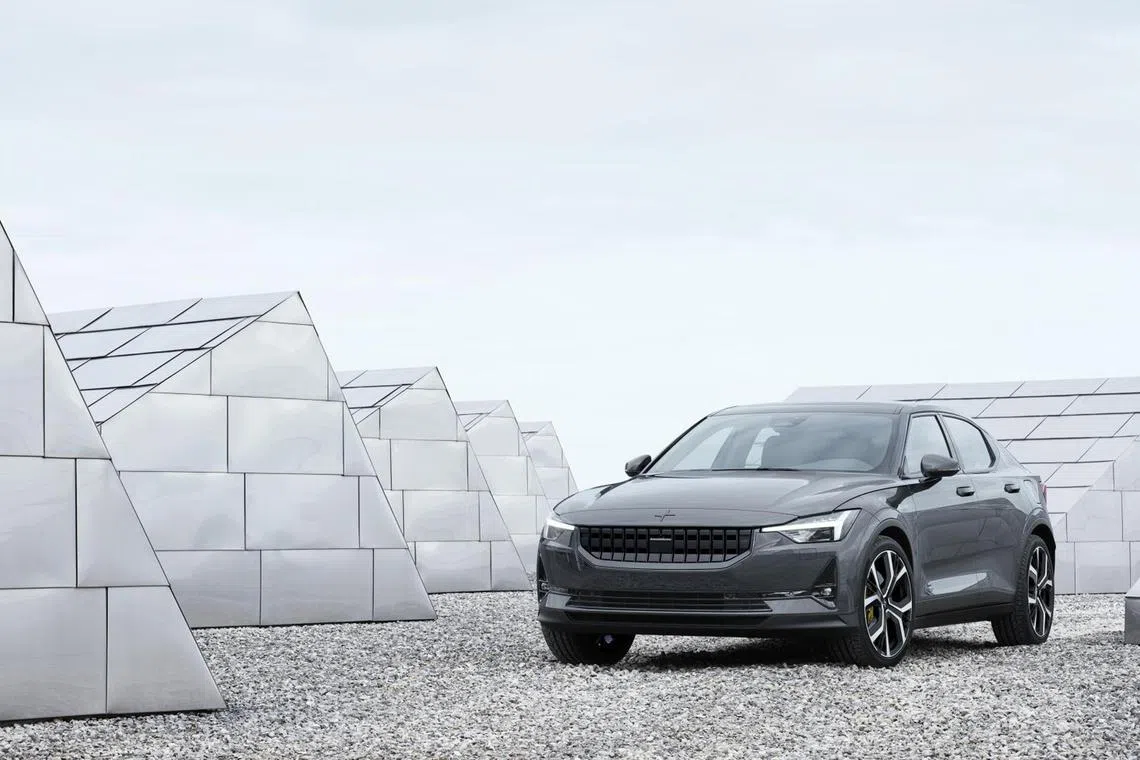Global study says IPCC climate targets won’t be met by EV conversion alone
Sign up now: Get ST's newsletters delivered to your inbox

If all the world's vehicles were electric vehicles like the Polestar 2 (above), it will not make a dent on goals to contain rising temperatures.
PHOTO: POLESTAR
Follow topic:
SINGAPORE – The automotive industry is unlikely to meet targets set by the international community to slow down climate change unless drastic steps are taken, according to a report just published by global consultancy Kearney.
Commissioned by electric vehicle (EV) makers Polestar and Rivian, the report states that the Intergovernmental Panel on Climate Change’s (IPCC) goal to limit global temperatures rising by 1.5 deg C from pre-industrial times “will be exceeded by at least 75 per cent by 2050”.
Using open-source data to model the current trajectory for emissions stemming from the car industry, the report concludes that more needs to be done besides electrifying the world’s vehicle population.
Passenger vehicles account for 15 per cent of all greenhouse gas emissions globally. The IPCC has stated that all greenhouse gas emissions need to be reduced by 43 per cent by 2030 and the report makes it clear that the automotive industry is “far off track”.
It states that if the world’s combustion engine vehicle population were all converted to EVs, the industry would still overshoot the IPCC’s goal by 50 per cent by 2050.
Despite the gloomy outlook, the car industry still has a chance to get back on track. While replacing fossil fuel-powered cars with electric cars is one lever, the report cites two other crucial levers.
One is to increase renewable energy in power grids, and the other to cut greenhouse gas emissions in the manufacturing supply chain.
The automotive industry also needs to have “a firm end date for fossil fuel car sales globally”.
Ms Fredrika Klaren, head of sustainability at Swedish marque Polestar, said: “Car companies may be on different paths when it comes to brand, design and business strategies, and some won’t even admit that the road to the future is electric.
“I believe it is and that the climate crisis is a shared responsibility, and we must look beyond tailpipe emissions. This report makes clear the importance of acting now and together. There’s a clear cost to inaction, but there’s also a financial opportunity for innovators who find new answers to the challenges we face.”
Kearney’s report has been shared with several of the world’s leading carmakers as well as news media.
Ms Anisa Costa, chief sustainability officer at American carmaker Rivian, said: “The report’s findings are sobering. Our hope is that this report lays the groundwork for the automotive industry to collaborate in driving progress at the pace and scale we need – and ideally, inspiring other industries to do the same. Together, I’m confident we can win the race against time.”
Meanwhile, Toyota Motor chief scientist Gill Pratt said at the World Economic Forum in January that while EVs might be the long-term solution to decarbonising the automotive industry, the shortage of raw materials for batteries and a lack of charging infrastructure – especially those which use renewables – present a huge hurdle.
In the short term, hybrids are a suitable option, he noted, adding that instead of making one long-range EV powered by a huge battery, the materials in that battery could be used for smaller batteries in several dozens of petrol-electric hybrids. The latter, he argued, would be far more effective in reducing carbon emissions.
In fact, he said a 100kWh battery found in several premium EVs could be used in more than 90 Toyota Prius hybrid cars. If so, the combined carbon emission reduction of the Priuses would far exceed the emission reduction of that one EV.
The fact that hybrids are generally more affordable than equivalent EVs means that more people can drive them, versus EVs, which are largely accessible to wealthier buyers and sold with sizeable tax incentives.
Mr Pratt also pointed out that charging infrastructure is not readily available in many parts of the world, including some parts of the United States. The availability of green chargers – which use renewable power supplies – is even lower, he added.


